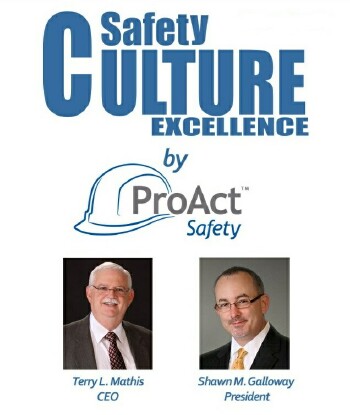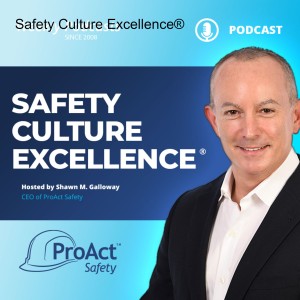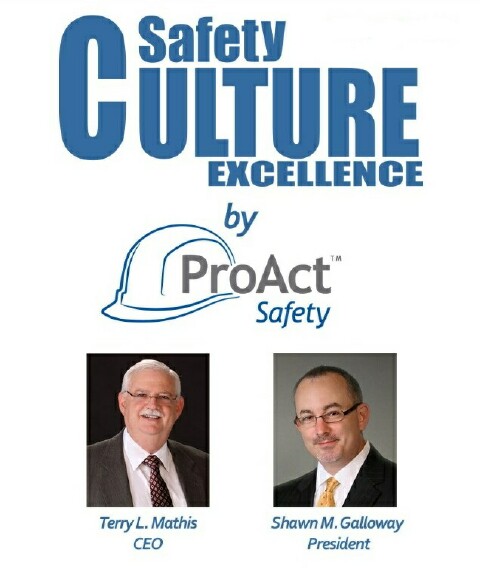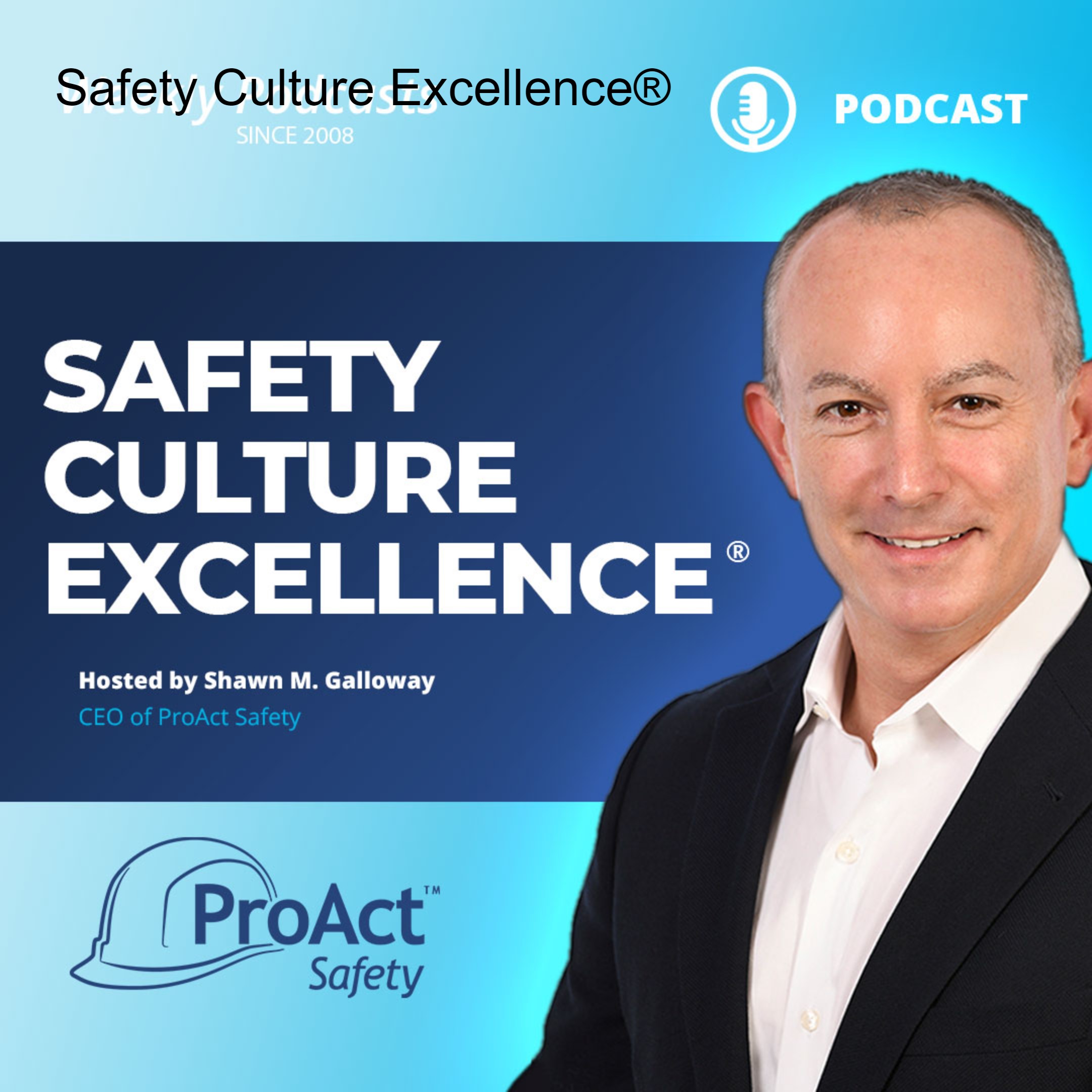Episodes

Wednesday Apr 29, 2015
Peeling the Onion: Solving Safety Problems One Layer at a Time
Wednesday Apr 29, 2015
Wednesday Apr 29, 2015
During a safety observation, workers were observed using the wrong tool for a job, which created a risk. When a safety committee saw the report, they petitioned management to buy the proper tool for the work station. The committee member who received the tool took it to the work station and presented it to the worker on shift with an explanation of what had happened and the action taken. The worker admitted that he really had not been taught what the proper tool was for the job and had used the home-made tool since he began his job.
The next month’s observations reported that workers were still using the wrong tool for the job. Follow-up revealed that workers on the other shifts had not received the communication and were not aware of the new tool. The safety committee made sure that every worker was made aware of the proper tool in safety and tool box meetings and felt sure the next month’s data would show the problem solved.
The next month, the observations showed the workers were STILL not using the right tool. Follow-up revealed that workers had formed the habit of using the wrong tool and that the habit was not changed. The safety committee developed a plan to remind workers and, within the next few months, the problem was truly solved.
Lessons learned:
• Safety problems can be multi-layered and require multiple fixes.
• Solving problems requires follow-up.
• Influences need to be addressed in order to change the behavior.
-Terry L. Mathis
For more insights, visit
www.ProActSafety.com
Terry L. Mathis is the founder and CEO of ProAct Safety, an international safety and performance excellence firm. He is known for his dynamic presentations in the fields of behavioral and cultural safety, leadership, and operational performance, and is a regular speaker at ASSE, NSC, and numerous company and industry conferences. EHS Today listed Terry as a Safety Guru in ‘The 50 People Who Most Influenced EHS three consecutive times. He has been a frequent contributor to industry magazines for over 15 years and is the coauthor of STEPS to Safety Culture Excellence (2013, WILEY).

Wednesday Apr 08, 2015
Training vs. Education
Wednesday Apr 08, 2015
Wednesday Apr 08, 2015
More and more organizations are using computer-based training (CBT) modules. Most started using them for OSHA-required yearly refresher training. The CBT approach had some advantages: workers could attend individually rather than in a classroom with multiple students and an instructor; the individual training approach caused less disruption of business activities than a classroom approach; the training was self-paced so everyone could move through the materials at their own pace; the modules could include testing for knowledge levels; and the CBT could keep current rosters of who had completed the various modules.
Then organizations expanded the use of CBT into more questionable areas. Along this path, someone forgot that CBT is education; not training. You can impart information via computer but you cannot build manual skills. Relying on CBT to teach manual job skills or even basics such as fire-extinguisher use is only a partial approach. Students end up having knowledge without skills. If the CBTs are followed up with on-the-job training or classroom simulations, the knowledge can begin to be translated into skills. Without such follow-up, CBTs can simply create a false sense of competence that can, and has, resulted in serious safety incidents.
-Terry L. Mathis
For more insights, visit
www.ProActSafety.com
Terry L. Mathis is the founder and CEO of ProAct Safety, an international safety and performance excellence firm. He is known for his dynamic presentations in the fields of behavioral and cultural safety, leadership, and operational performance, and is a regular speaker at ASSE, NSC, and numerous company and industry conferences. EHS Today listed Terry as a Safety Guru in ‘The 50 People Who Most Influenced EHS three consecutive times. He has been a frequent contributor to industry magazines for over 15 years and is the coauthor of STEPS to Safety Culture Excellence (2013, WILEY).


Wednesday Apr 01, 2015
Probability: Group Experience
Wednesday Apr 01, 2015
Wednesday Apr 01, 2015
A worker using the wrong tool for a job injures his hand. Another worker has used the same wrong tool numerous times with no injury. One worker retires having used this tool his whole career with no injury and another retiree has had three injuries related to using that tool. Each experience is different, and thus, each perception of the risk is different. Some think the practice is dangerous and some think it is not. Who is right and who is wrong?
We express a range of experience mathematically by calculating probability. With enough data points we can establish a pattern to this risk that may not be obvious to anyone who is a data point, but is accurately describing the experience of the large group. Sharing the findings of a probability study can actually change and norm the perceptions formed by differing experiences within the group. This new perception can more accurately describe the risk and encourage taking precautions against the risk even among those whose experience hasn’t detected the possibility of accidental injury. Perceptions, if not thus managed, will vary by experience. Managing the accuracy of perceptions is a powerful tool for improving safety performance that many organizations have not utilized.
-Terry L. Mathis
For more insights, visit
www.ProActSafety.com
Terry L. Mathis is the founder and CEO of ProAct Safety, an international safety and performance excellence firm. He is known for his dynamic presentations in the fields of behavioral and cultural safety, leadership, and operational performance, and is a regular speaker at ASSE, NSC, and numerous company and industry conferences. EHS Today listed Terry as a Safety Guru in ‘The 50 People Who Most Influenced EHS three consecutive times. He has been a frequent contributor to industry magazines for over 15 years and is the coauthor of STEPS to Safety Culture Excellence (2013, WILEY).


Monday Mar 02, 2015
377 - The Reality of Positive Reinforcement
Monday Mar 02, 2015
Monday Mar 02, 2015


Wednesday Feb 11, 2015
Winning in the Post-Season
Wednesday Feb 11, 2015
Wednesday Feb 11, 2015
Many sports teams who have a good season develop high hopes for a good play-off performance only to be badly disappointed. It seems that play intensifies in the post-season when only the best teams are left and winning is contingent on more than the basics. Safety has some similarities: going from poor performance to better performance comes with the basics and reasonable effort. But when only a few accidents remain per year, preventing them takes a whole new level of effort.
The biggest mistake in both these scenarios is assuming that the strategy that got you to this point will get you the rest of the way to top. The problem is that the tools of “bad-to-good” don’t work on “good-to-excellent.” That game plan and those tools must form the basis of your effort, but winning will take a dose of “above and beyond.” The last remaining risks aren’t always visible to the naked eye and a whole new level of analysis is needed. When you get rid of the obvious risks, the next level is less obvious. When you eliminate the high-probability risks, the remaining ones are lower probability and harder to detect. Excellence is a whole new game overlaid on the old game. When you get to the playoffs, develop a new game plan.
-Terry L. Mathis
For more insights, visit
www.ProActSafety.com
Terry L. Mathis is the founder and CEO of ProAct Safety, an international safety and performance excellence firm. He is known for his dynamic presentations in the fields of behavioral and cultural safety, leadership, and operational performance, and is a regular speaker at ASSE, NSC, and numerous company and industry conferences. EHS Today listed Terry as a Safety Guru in ‘The 50 People Who Most Influenced EHS three consecutive times. He has been a frequent contributor to industry magazines for over 15 years and is the coauthor of STEPS to Safety Culture Excellence (2013, WILEY).


Wednesday Feb 04, 2015
Inside or Out?
Wednesday Feb 04, 2015
Wednesday Feb 04, 2015
I used to ask the airline pilot who lived across the street to suggest things to my teenager because he accepted them better from him than from his dad. Organizations have similar leanings; they prefer to get new ideas either from inside or outside. Some organizations are highly specialized and it is hard for outsiders to deeply understand their issues. They tend to prefer to listen to experts from within their ranks. Other organizations believe everyone on the inside thinks alike and new ideas need to come from outside experts or other organizations.
It is important to detect and understand which of these tendencies your organization has and to work with it rather than against it. External organizations should outsource training and speaking, and lean heavily on subject-matter experts to bring in new ideas. Internal organizations can still use outside expertise, but should consider bringing it into the mainstream through train-the-trainer and internal-consultant models that share the expertise with insiders who then, in turn, share it with the rest of the organization. The message is important, but the messenger can spoil it if you ignore where your organization prefers to get its new ideas.
-Terry L. Mathis
For more insights, visit
www.ProActSafety.com
Terry L. Mathis is the founder and CEO of ProAct Safety, an international safety and performance excellence firm. He is known for his dynamic presentations in the fields of behavioral and cultural safety, leadership, and operational performance, and is a regular speaker at ASSE, NSC, and numerous company and industry conferences. EHS Today listed Terry as a Safety Guru in ‘The 50 People Who Most Influenced EHS three consecutive times. He has been a frequent contributor to industry magazines for over 15 years and is the coauthor of STEPS to Safety Culture Excellence (2013, WILEY).


Wednesday Jan 28, 2015
Leading and Managing Safety
Wednesday Jan 28, 2015
Wednesday Jan 28, 2015
If safety is truly a value, and not just a changing priority in an organization, it must be led by the leader of the organization, not simply delegated to a safety professional. Other values such as integrity or honesty are not delegated, but led and demonstrated by organizational leaders.
Many safety professionals are titled as safety managers and, as such, can be delegated the job of managing the safety activities and recordkeeping of the organization. However, if these safety managers are expected to truly lead safety, they find themselves competing with the organizational leaders of finance, engineering or sales. This very delegation suggests that the true goal of the organization is being led by the leader and everything else is less important. Safety becomes a sub-culture led by a sub-leader and takes a secondary and non-integrated priority in the minds of workers. This division can lead to a dichotomy or conflict of priorities in which workers have to choose between pleasing the boss of production or the boss of safety.
Leading safety means establishing the value and walking the talk. Workers take cues from organizational leaders about what is most important. Leaders who regularly talk about safety and lead by personal example make the job of the safety manager much more fluid and truly integrate safety as a core organizational value that is woven into the fabric of daily work.
-Terry L. Mathis
For more insights, visit
www.ProActSafety.com
Terry L. Mathis is the founder and CEO of ProAct Safety, an international safety and performance excellence firm. He is known for his dynamic presentations in the fields of behavioral and cultural safety, leadership, and operational performance, and is a regular speaker at ASSE, NSC, and numerous company and industry conferences. EHS Today listed Terry as a Safety Guru in ‘The 50 People Who Most Influenced EHS three consecutive times. He has been a frequent contributor to industry magazines for over 15 years and is the coauthor of STEPS to Safety Culture Excellence (2013, WILEY).


Monday Jun 16, 2014
341 - Who Should Perform Behavior-Based Safety Observations?
Monday Jun 16, 2014
Monday Jun 16, 2014
Greetings everyone, this podcast recorded while in Galveston, TX. I’d like to share an article I wrote that was published May 2014 in BIC Magazine. The published article can either be found on the magazine’s website or under Insights at www.ProActSafety.com.
I hope you enjoy the podcast this week. If you would like to download or play on demand our other podcasts, please visit the ProAct Safety’s podcast website at: http://www.safetycultureexcellence.com. If you would like access to archived podcasts (older than 90 days – dating back to January 2008) please visit www.ProActSafety.com/Store. For more detailed strategies to achieve and sustain excellence in performance and culture, pick up a copy of our book, STEPS to Safety Culture Excellence - http://proactsafety.com/insights/steps-to-safety-culture-excellence
Have a great week!
Shawn M. Galloway
ProAct Safety

Wednesday May 14, 2014
Starting vs. Stopping
Wednesday May 14, 2014
Wednesday May 14, 2014
Is safety excellence a matter of stopping risks or starting precautions? Should we focus on the “thou shalt nots” of safety, or encourage positive action? This topic directly impacts the question we have discussed before, “Is safety excellence a matter of achieving success or avoiding failure?” But beyond that philosophical point, let’s discuss the tools used for starting and stopping human behavior and their side effects.
The ultimate behavioral stopping tool is punishment. In the behavioral sciences, anything that tends to stop behavior is consider punishment and what makes it effective is the timing and probability. Negative consequences for behavior that are certain and timely tend to stop, or “extinguish” the behavior. But punishment does not automatically start another behavior in its place. Artificially-imposed punishment can also damage relationships and culture. It can be important to stop certain behaviors that present unacceptable risks or damage safety culture, and punishment might be the right tool for that job.
Starting tools for behavior include positive reinforcement and motivation. If the safety challenge is getting workers to identify risks, take precautions or participate in safety activities, these starting tools can be invaluable. Starting tools also are relationship and culture builders. Workers who help each other start better practices and improve performance tend to strengthen the bonds between themselves.
Determining the right tools for safety excellence involves accurately identifying exactly what behaviors need to be stopped or started. An effective safety strategy should include these distinctions.
-Terry L. Mathis
Terry L. Mathis is the founder and CEO of ProAct Safety, an international safety and performance excellence firm. He is known for his dynamic presentations in the fields of behavioral and cultural safety, leadership, and operational performance, and is a regular speaker at ASSE, NSC, and numerous company and industry conferences. EHS Today listed Terry as a Safety Guru in ‘The 50 People Who Most Influenced EHS in 2010, 2011 and 2012-2013. He has been a frequent contributor to industry magazines for over 15 years and is the coauthor of STEPS to Safety Culture Excellence, 2013, WILEY.

Monday Mar 31, 2014
335 – Who Should Implement Behavior Based Safety?
Monday Mar 31, 2014
Monday Mar 31, 2014
Greetings everyone, this podcast recorded while in Anchorage, Alaska. I’d like to share an article I wrote that was published March 2014 in BIC Magazine. The published article can either be found on the magazine’s website or under Insights at www.ProActSafety.com.
I hope you enjoy the podcast this week. If you would like to download or play on demand our other podcasts, please visit the ProAct Safety’s podcast website at: http://www.safetycultureexcellence.com. If you would like access to archived podcasts (older than 90 days – dating back to January 2008) please visit www.ProActSafety.com/Store. For more detailed strategies to achieve and sustain excellence in performance and culture, pick up a copy of our book, STEPS to Safety Culture Excellence - http://proactsafety.com/insights/steps-to-safety-culture-excellence
Have a great week!
Shawn M. Galloway
ProAct Safety

